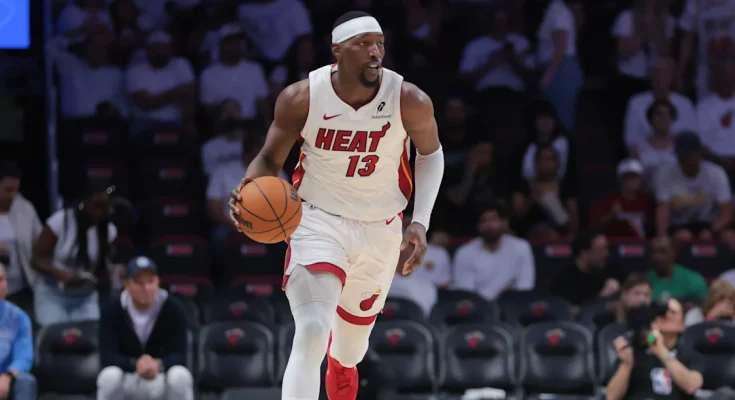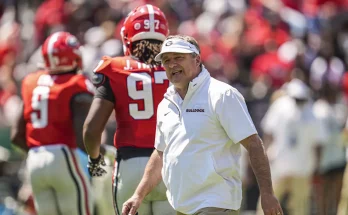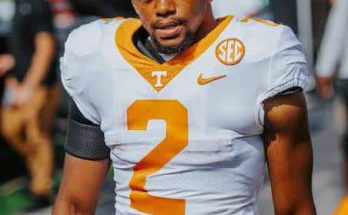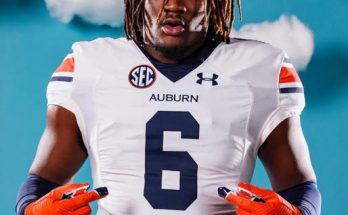The NBA offseason never disappoints, and once again, the Miami Heat find themselves at the epicenter of trade rumors. The latest proposal sweeping across front offices and fan forums is nothing short of seismic — a colossal three-team trade scenario that could land a \$238 million superstar in South Beach. While the names involved are still speculative, the potential framework of the deal has generated considerable buzz and may signal a major shift in the Eastern Conference power structure. If completed, the deal would mark another bold move in Pat Riley’s long history of superstar hunting, and one that could redefine the Heat’s trajectory for the next several years.
At the heart of this blockbuster is the Miami Heat’s continued quest for a franchise-changing offensive weapon, someone capable of lifting the team back to championship contention. While Jimmy Butler remains a key piece of the puzzle, the window with him is narrowing. His age, health concerns, and looming contract decisions have forced the Heat to explore high-stakes options. Enter the \$238 million star — a perennial All-NBA performer, still in his prime, with the kind of scoring punch and playmaking ability that can turn a good team into a great one.
The three-team dynamic is necessary for Miami because of the complexity involved in acquiring such a massive contract. Miami lacks the cap space and picks to make a straightforward deal with a team harboring a top-tier superstar. However, by involving a third franchise — likely one in transition or looking to shed salary and reset — the Heat can package their valuable assets (Tyler Herro, Jaime Jaquez Jr., Nikola Jović, and multiple picks) and facilitate a blockbuster that works financially and competitively for all sides. This is classic Riley maneuvering: using leverage, reputation, and creativity to land the big fish.
Speculation has centered around several high-profile stars potentially on the move. The most commonly mentioned name in this scenario is Donovan Mitchell of the Cleveland Cavaliers. With Mitchell set to become a free agent in the near future and Cleveland facing pressure to either extend him or avoid losing him for nothing, a sign-and-trade involving multiple parties becomes a logical outcome. Mitchell’s scoring prowess, playoff experience, and ability to create his own shot fits the Heat’s needs perfectly. His contract — a potential max extension totaling around \$238 million over five years — matches the reported value of the superstar in the rumors.
Another intriguing possibility is Trae Young from the Atlanta Hawks. Young, whose contract extension aligns closely with the \$238 million figure, has been at the center of trade whispers for months. Atlanta is clearly in a retooling phase, especially after moving Dejounte Murray, and they may be willing to pivot further by shipping out their franchise point guard. Miami has long been connected to Young, both because of his offensive brilliance and his polarizing fit in Atlanta. In Miami, surrounded by a defensive-minded roster and a coach like Erik Spoelstra, Young’s weaknesses could be minimized while his strengths are amplified.
A third — and less likely, but tantalizing — name is Luka Dončić. Though the Mavericks remain committed to building around him, NBA history has shown that even the most loyal superstars can have their patience tested. If Dallas falters again, or if Luka expresses dissatisfaction, a shockwave deal could form. The Heat, with their prestige, market, and championship culture, would undoubtedly throw their hat into the ring. A Dončić acquisition would require an unprecedented offer and perhaps the willingness of another team to offload even more salary to make it work — but in theory, a three-team structure is the only feasible way such a monumental move could happen.
Regardless of which star the Heat would target, the framework remains consistent: Miami gives up multiple young players, draft capital, and perhaps one of their big contracts (Duncan Robinson or Terry Rozier), a second team absorbs some of that salary or gains a rebuilding piece, and the third team — the one losing the superstar — walks away with a mixture of assets and flexibility. It’s not easy to engineer, but it’s been done before. The Kevin Durant trade, the Kyrie Irving deal, and even the Bradley Beal to Phoenix move all involved complex maneuvering and multiple partners.
Pat Riley has always preached “stars win in this league.” That mantra has driven his pursuit of game-changers like Shaquille O’Neal, LeBron James, Chris Bosh, and Jimmy Butler over the years. It also explains why the Heat consistently poke around the biggest names on the market. The Heat are not content with just being a perennial playoff team. They want to be feared. And right now, with Boston and Milwaukee in the East looking strong and teams like Philadelphia reloading, Miami is searching for a way to close that talent gap. A \$238 million star is how you do that.
Of course, there are risks. Giving up the team’s depth and draft future for a single player — no matter how talented — could backfire. Herro, Jaquez, and Jović represent not just youth, but cost-controlled contracts in an increasingly expensive league. Additionally, integrating a ball-dominant star with Butler and Bam Adebayo would require some ego management and system adjustments. Miami’s famed “Heat Culture” can help with that, but chemistry isn’t guaranteed.
There’s also the issue of timing. The new collective bargaining agreement introduces harsher penalties for teams exceeding the second tax apron, making roster construction around three max players more complicated. If the Heat pull the trigger on this kind of move, they’ll need to hit on minimum-salary players, veteran ring-chasers, and savvy draft picks to fill out the bench. That’s not easy, but Miami’s developmental track record offers hope. They turned undrafted players into rotation contributors year after year — a feat that might need to be repeated to make this plan sustainable.
For fans, the prospect of a blockbuster is exhilarating. The idea of pairing Butler, Bam, and a superstar scorer is the kind of vision that fuels championship dreams. The Heat have come close in recent years — making the Finals twice in four years but falling short each time. The missing ingredient? A consistent, go-to scorer who can create something out of nothing in the biggest moments. Butler has worn that cape admirably, but at 35, he needs help. A new star could not only extend Miami’s window but elevate them to the top tier of contenders.
The front office faces a tough decision: go all-in now and risk future flexibility, or play it safe and rely on internal development. Given Riley’s history, betting on the bold move seems more likely. He’s never been one to wait and see. And in a league increasingly driven by player movement, being proactive often separates the good teams from the great ones.
This proposed trade — if it ever gets off the ground — would be one of the biggest in franchise history. It would redefine the Heat’s identity, excite the fan base, and potentially set up another Finals run. The coming weeks will be crucial, with front offices finalizing rosters, stars making their intentions clear, and leverage games unfolding. Whether or not this exact scenario plays out, the message is clear: the Miami Heat are not standing still. They’re swinging for the fences, eyes locked on the next superstar who can take them all the way.



